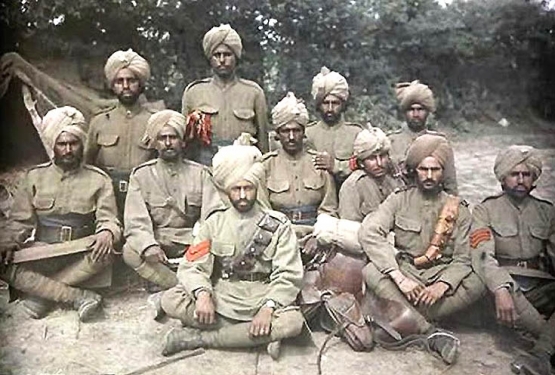|
World War One Film Clips  Shortly after the U.S. Congress declared war against Germany, a New York City minister named Dr. John Haynes Holmes (1879 - 1964) took to his pulpit and made a series of sound remarks as to why the United States had no business participating in the European war:
"Other clergymen may pray to God for victory for our arms -- I will not. In this church, if no where else in all America, the Germans will still be included in the family of God's children. No word of hatred will be spoken against them, no evil fate will be desired upon them. I will remember the starving millions of Belgium, Servia, Poland, and Armenia, whom my countrymen may neglect for the more important business of killing Germans..." Throughout much of World War I, the German-American war correspondent Karl Von Wiegand (1874 - 1961) reported on the goings-on within the Kaiser's Army for an American new syndicate. As "luck" would have it, he happened to be in a front line German trench when the British Army launched their enormous attack on July 1, 1916. Here is one of his earlier dispatches from the German side:
"We stood awe-stricken. Mankind, like Frankenstein, was being devoured by the monster it had created". Sporting terms used as a metaphors for war are very common and come naturally to those who tend to think about matters military on a regular basis; yet this article uses the expression, "playing the game" more as a character trait that was unique to the British. The author, Austin Harrison, writing in 1915 (the year of "grim determination") believed that the English have always "played the game" as a matter of course; they have always maintained "good form", and yet: "Playing the game is only half the battle in war [and]...it will be the finest game we ever have played."
Sergeant Alvin York (1887 - 1964) of the 328th Infantry Regiment, Eighty-Second Division, was one of the great heroes of the First World War. The attached four page article recalled those deeds as well as his glorious trip to New York City where he was luxuriated at the Waldorf Astoria and feted by the swells of Gotham. A black and white diagram depicting the breach of the 1903 Springfield rifle , with all parts named. This rifle was the primary weapon for American troops during World War One and was in use by that army up until 1936. At the time of America's entry into the W.W. I, in April of 1917, there were roughly 843,239 Springfield '03 rifles issued; seeing that this was not nearly enough for such an adventure, the Springfield Armory manufactured 265,620 additional rifles. In some photographs from the war, American soldiers and Marines are pictured shouldering the British Enfield rifle, which had been modified to fit the ammunition of the Springfield '03. Subsequent modifications produced the Springfield 1903A3 and A4 which were issued to American snipers up until the earlier years of the Vietnam War. , with all parts named. This rifle was the primary weapon for American troops during World War One and was in use by that army up until 1936. At the time of America's entry into the W.W. I, in April of 1917, there were roughly 843,239 Springfield '03 rifles issued; seeing that this was not nearly enough for such an adventure, the Springfield Armory manufactured 265,620 additional rifles. In some photographs from the war, American soldiers and Marines are pictured shouldering the British Enfield rifle, which had been modified to fit the ammunition of the Springfield '03. Subsequent modifications produced the Springfield 1903A3 and A4 which were issued to American snipers up until the earlier years of the Vietnam War. Throughout the course of the war the U.S. Army was paying $19.50 for each rifle. The novelist, journalist, anti-Semite and French Academy member Maurice Barres (1862 - 1923) had some opinions regarding the word "Poilu" (the popular and affectionate slang term for the French front line soldier, which translates into English as "hairy guy"). In the following one page essay he presented a history of the word and continued with an explanation as to why it bugged him: "It lacks dignity. To my taste it belittles those whom it is meant to laud and serve. A hero can hardly be expressed by this brazen-faced and slanderous epithet. And yet, since it has taken root in our battlefields now for more than a year, one hesitates to speak ill of this word, in which so many admirable acts are somehow visible. It is winning it's historic titles". In the end, no one really cared what Maurice Barres had to say on this topic and the sobriquet "poilu" remained in place. |
MORE ARTICLES >>> PAGE: * 1 * 2 * 3 * 4 * 5 * 6 * 7 * 8 * 9 * 10 * 11 * 12 * 13 * 14 * 15 * > NEXT |
|